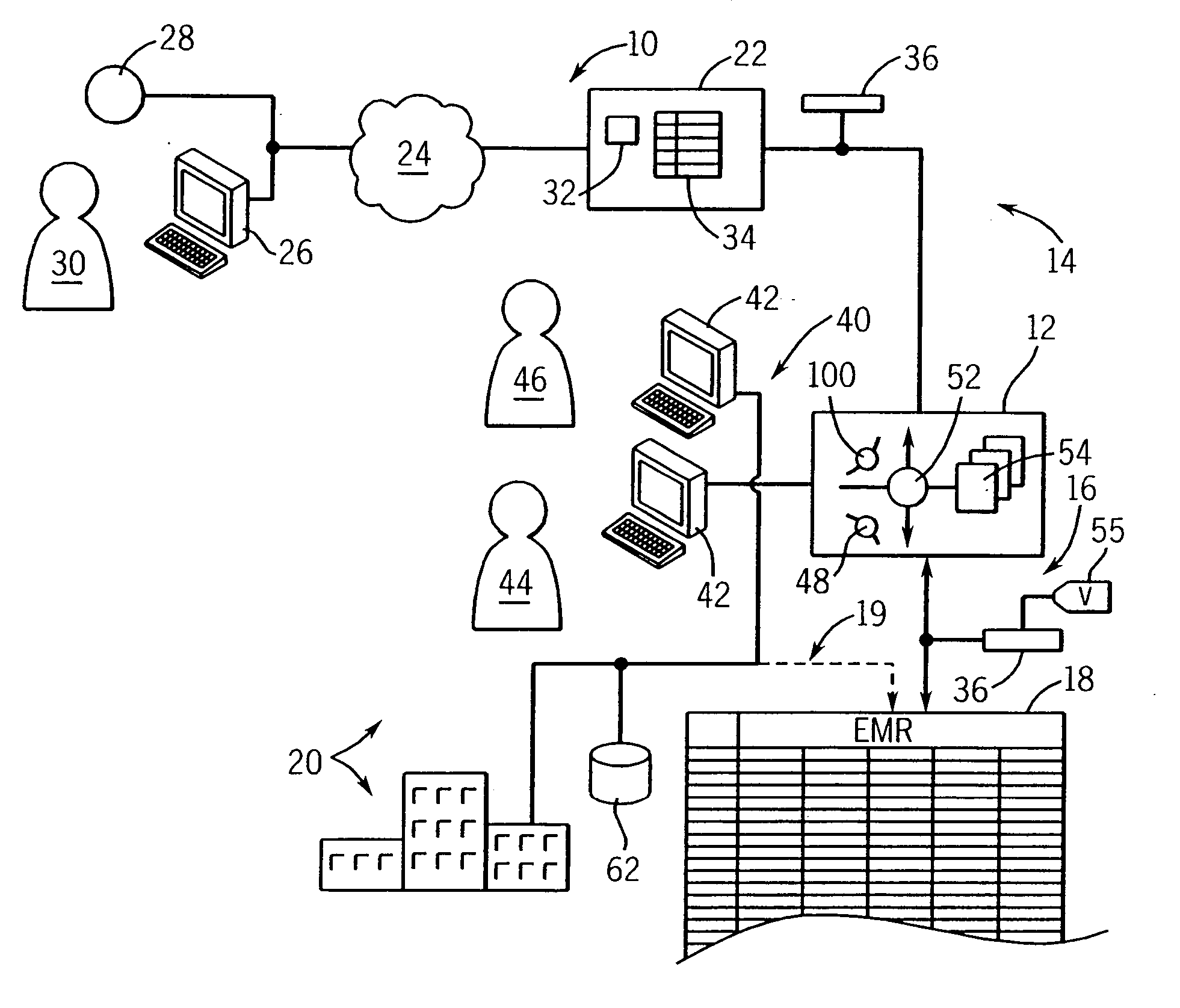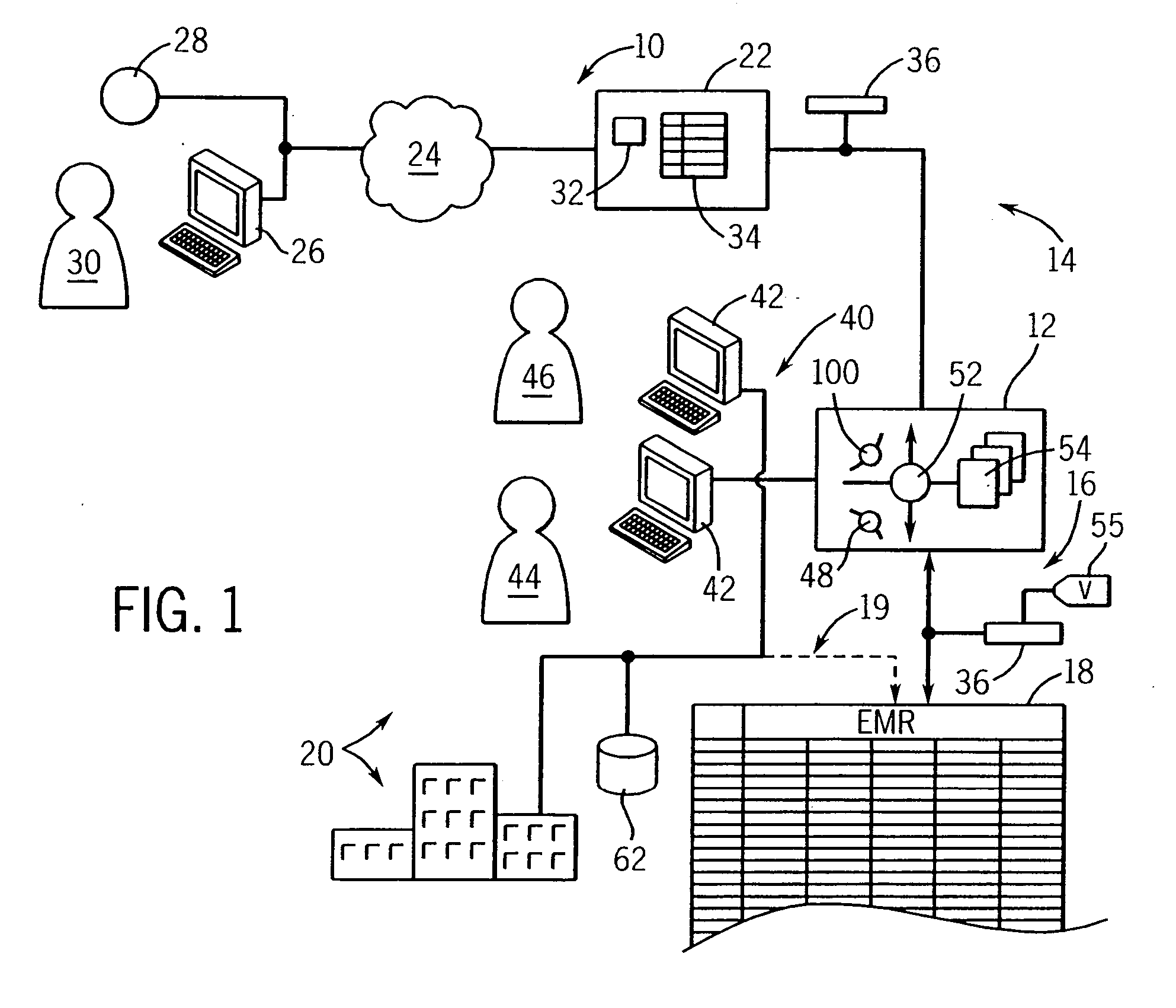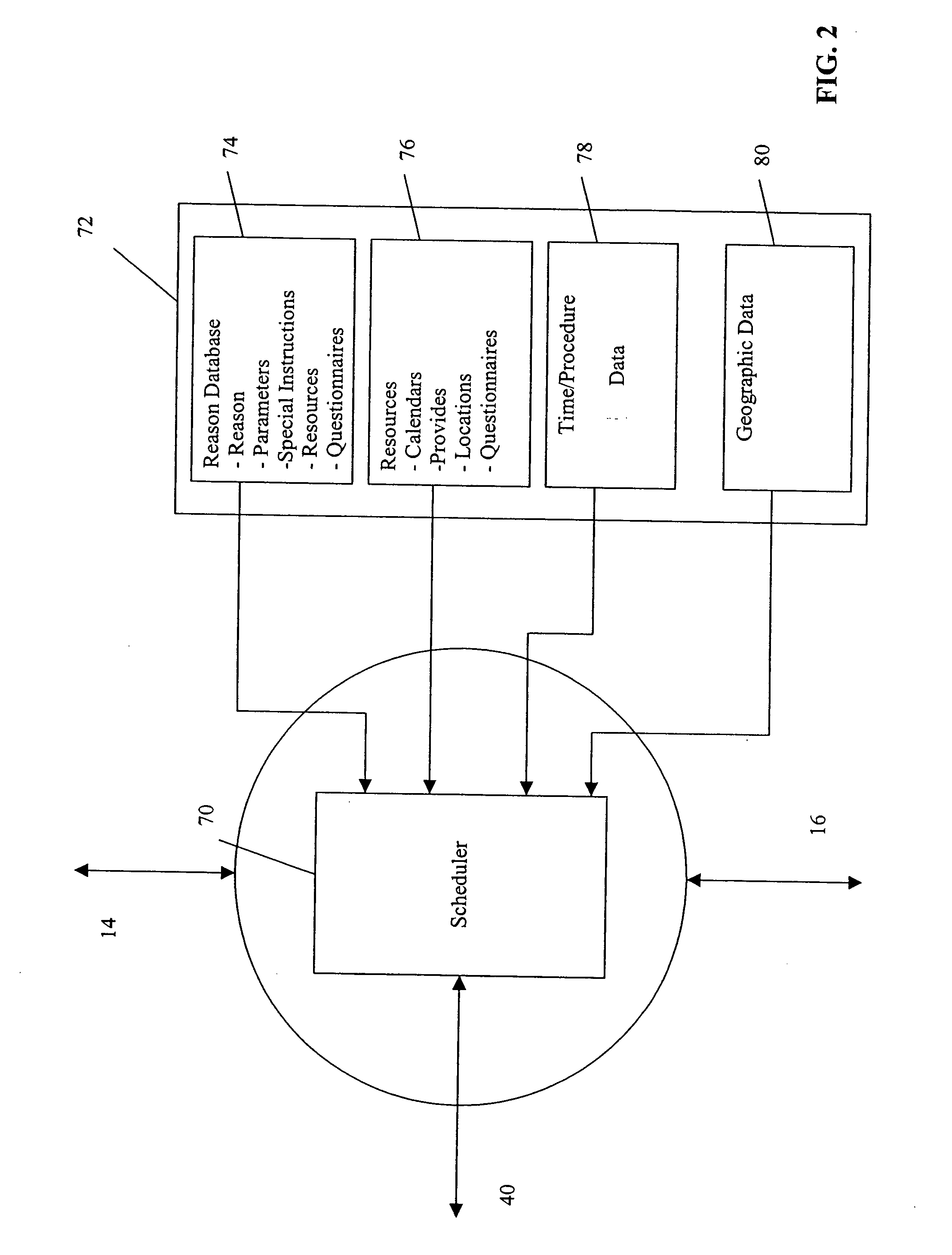Patient check-in/scheduling kiosk
a technology for patient check-in and scheduling, applied in the field of electronic medical record (emr) systems, can solve the problems of inefficiency, time-consuming and inefficient arrangements, and inefficient systems, etc., and achieve the effect of increasing efficiency and increasing efficiency in the healthcare system
- Summary
- Abstract
- Description
- Claims
- Application Information
AI Technical Summary
Benefits of technology
Problems solved by technology
Method used
Image
Examples
Embodiment Construction
[0089] Referring now to FIG. 1, a patient scheduling system 10 per the present invention may include an interface module 12 standing between a patient communication channel 14 and an EMR communication channel 16, the latter communicating with an electronic medical record (EMR) database 18. Generally the interface module 12 is a program that may be physically located on an independent computer or run on a computer shared with another function such as the EMR database 18.
[0090] Generally, the EMR database 18 includes a complete medical history of many patients collected from a variety of healthcare sources 20 including physicians and other healthcare professionals such as members of the staff at hospitals, clinics, and laboratories communicating on standard EMR network 19. As will be understood to those of ordinary skill in the art, the EMR database 18 includes biographical information describing the patient, including the patient's age, gender, height and weight, and medical history...
PUM
 Login to View More
Login to View More Abstract
Description
Claims
Application Information
 Login to View More
Login to View More - R&D
- Intellectual Property
- Life Sciences
- Materials
- Tech Scout
- Unparalleled Data Quality
- Higher Quality Content
- 60% Fewer Hallucinations
Browse by: Latest US Patents, China's latest patents, Technical Efficacy Thesaurus, Application Domain, Technology Topic, Popular Technical Reports.
© 2025 PatSnap. All rights reserved.Legal|Privacy policy|Modern Slavery Act Transparency Statement|Sitemap|About US| Contact US: help@patsnap.com



